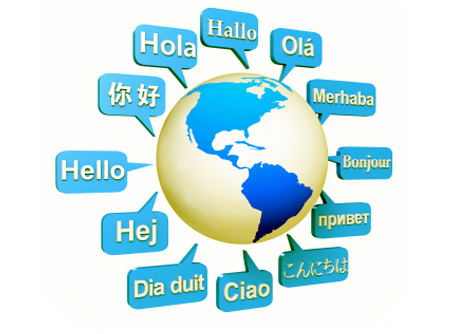Overcoming Language Barriers in International Business
Have you experienced a language barrier in business? In most businesses, language barriers can have a dire affect; however for others it can benefit their business.
Language should not stop us from doing business.
We have worked with clients from different parts of the world speaking different languages, we can translate from one language to another. We have clients in Norway speaking Norwegian, Netherlands speaking Dutch, Venezuela speaking Spanish and so on. But our common language remains English.
Language barriers are a common challenge in international business settings—and a two-way process. What native speakers often don’t realize is that frequently it is not the other person’s accent but their own way of speaking that creates the greatest barriers to effective communication.
Some strategies I follow for effective communication with foreign clients are:
1. Speak slowly and clearly:
Focus on clearly enunciating and slowing down your speech. Even if you’re pressured for time,don’t rush through your communication. Doing so often takes more time, misunderstanding can lead to confusion and you’ll ultimately have to invest additional time in clearing up the confusion.
2. Ask for clarification:
If you are not 100% sure you’ve understood what others say, politely ask for clarification. Avoid assuming that you’ve understood what’s been said.
3. Frequently check for understanding:
Check both, that you’ve understood what’s been said and that others have fully understood you.Practice reflective listening to check your own understanding(e.g. ‘So what I hear you saying is…’)and use open-ended questions to check other people’s understanding. Ask, ‘what’s your understanding of this process?’ instead of ‘is that clear?’.
4. Avoid Humor during First meet:
Avoid humor during a few initial sessions, because not everyone understands your type of humor. Because a slang or joke in your intermediate language could change the meaning, which could sound rude or offensive.
5. Be careful of jargon:
Watch the use of Abbreviations and other organizational language that may not be understood by others. If you use them, provide in parenthesis a description of what these are so others can learn to use the same language you do.
6. Define the basics of business:
In international business contexts terms such as:‘success’, ‘doneness’, ‘meetings’, ‘punctuality’, etc.may mean different things to different people.Spend time early in your communication defining what these mean to you and others. Invest in building a shared vocabulary.
7. Be specific:
Spell out your expectations and deadlines clearly.Instead of, ‘Please get back to me shortly,’ say ‘Please email the completed report by 5 pm EasternStandard time on Wednesday, February 21.’
8. Choose your medium of communication effectively:
While useful, there are times when the medium is likely to be ineffective. When a message is complex or there is tension or conflict that needs to be resolved, switch to another medium. To convey important information use Chat or emails. But try to use voice if you want to build a concrete bridge between your understandings.
9. Provide information via multiple channels:
Follow voice calls with emails that summarize what’s been said. When possible, provide presentations,agendas, etc. in advance so those working in their non-native language can get familiar with materials.
10. Be patient:
Cross-cultural communication takes more time. If not at all times, certainly initially you cannot expect your communication to occur with the same speed and ease as when you are communicating with someone from your own culture.
11. Don’t use Accent:
Never use any fake accent.Foreign Accent Syndrome!!A specialty of their kind is those who come with the most hilarious accents! If suddenly an Indian turns American, tries to speak fast or tries to mimic American English, then definitely the other person knows he is faking it. So avoid it!
Reference:
Culturosity Strategies for Overcoming Language Barriers
